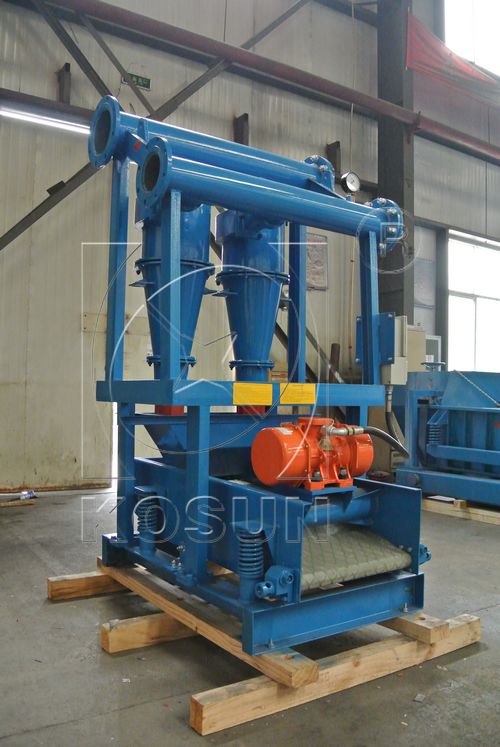Dec 24, 2013
In a complete drilling fluid solids control system,there are usually four or five main stages,every stage is important for the whole drilling mud system.Of course,every stage needs high-efficient solids control equipment.Normally solids control system is consist of five stages, including mud tank, shale shaker, vacuum degasser, desander, desilter, centrifuge. Shale shaker is used to separate the big solids with diameter above 75μm, and 45~74μm for desander, and 15~44μm for desilter. Sometimes desander & desilter are combined as high efficient mud cleaner.
Desander is mainly used for the second phase purification of drilling liquid. It removes nocuous solid, stabilizes drilling liquid properties and improves drilling efficiency. The hydrodynamic cyclone of the desander is made of wear resistant cast iron. The KOSUN drilling desander is reliable, high-effective and has the long using life.

1. The size of the desander can process is 100-125% of the total mud circulation rate.
2. Keep all lines as short & straight as possible with a minimum of pipe fittings. It will reduce loss of pressure head on the feed line & minimize back-pressure on the overflow discharge line.
3. Do not reduce the diameter of the overflow line from that of the overflow discharge manifold.
4. Keep the end of the discharge line above the surface of the mud to avoid creating a vacuum in the line.
5. Install a low equalizer line to permit backflow in to the desander section.
Operating desanders at peak efficiency is a simple matter, since most desanders are relatively uncomplicated devices. Here are a few fundamental principles to keep in mind.
1. Operate the desander unit at the recommended feed manifold pressure, usually around 30 PSI. A feed pressure too low decreases efficiency and a pressure too high puts un-due wear & tear on the cyclone.
2. Check cones regularly to ensure the discharge orifice is not plugged.
3. Run the desander continuously let fluid overflow back and process over & over.
4. Operate the desander with a light spray rather than a rope discharge to maintain peak efficiency.
5. Maintenance of desanders normally entails no more than checking all cone parts for excessive wear and flushing out the feed manifold between bores. Large trash may collect in feed manifold, which could cause cone plugging during operation. Preventive maintenance minimizes downtime & repairs are simpler between bores, rather than during drilling operations.